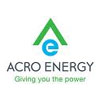It had to happen sooner or later. The combination of drastically lower prices for solar panels and the huge potential for industry growth is attracting the next level of industry players – the consolidators.
It’s a familiar trajectory: as an "immature" industry becomes more established, larger companies with greater marketing and financial muscle roll-up the many "mom and pops" into fewer larger firms.
That’s beginning to happen with solar installation firms. A handful of solar integrators are buying small U.S. installers, and that’s bound to increase. Akeena Solar (Nasdaq: AKNS), Real Goods Solar (Nasdaq: RSOL), Renewable Energy Corp (REC.OL) and now Acro Energy Technologies (ART.V) are the most active consolidators.
Acro Energy is positioning itself to become a national brand in the Solar Integration Business. CEO Harry Fleming told me solar installers are ripe for roll-up – there are over 750 in California alone – which comprises 80% of the US solar market. Most are former electricians, not businesspeople, he says, an indication of an immature market. Mom and pops still own 60% of the market, but the top 10 installers in California are gaining ground – they now have a 40% market share.
"As the market matures and consolidates," says Fleming, "mom and pops will be reduced to under 10% of the market. Larger companies are more sophisticated, have a better cost structure and more efficient marketing costs."
Acro Energy, which trades on Canada’s Venture Exchange, made its first acquisition in February 2009. It bought Acro Electric- which held the distinction of California’s seventh largest installer with only $7 million in sales. They have since bought two other solar installers; one with about $2 million in sales and another at $4.5 million. With these three acquisitions, Acro Energy generates about $15 million in revenue, making them one of the top five solar installers in California.
The very biggest players bring in $50-$60 million in revenue, with a mix of residential and commercial installations.
Now, Acro is talking with companies earning $8 million to $25 million in revenue and a strong geographic presence. After acquisitions in northern and southern California, they’ll move to Arizona, Oregon or Texas.
"As our stock price rises in reaction to our acquisitions, we’ll be able to fundraise more and buy bigger companies," says Fleming. "Our first goal is to achieve a strong presence in the most important geographical areas."
When Acro buys a company they take over the financial and marketing sides of the business. They send marketing leads to the acquired company, which continues to sell and install. Acro buys panels from just three manufacturers to get the best price. They offer low, medium and high priced panels. The majority of panels are from Suntech, the low cost producer, followed by Sharp and SunPower.
"Because of vastly lower solar panel costs, we’re banking on 2010 being a break out year for solar in states beyond California," he says.
Indeed, solar installers are now in the cat bird seat. The number of solar manufacturers increased dramatically over the past few years, many of them from China with low cost structures. Now they are madly competing for market share, building solar panels as fast as they can. That means supply is way ahead of demand, which has resulted in panel prices dropping more than 50% over the past year.
"Prices are dropping so rapidly, it’s hard to keep track of," says Fleming. "We buy as few as we can at a time right now because prices keep going down. I get daily emails from no-name Chinese panel manufacturers offering me $1.50 a watt – they all expect to double capacity over the next 6 months, as do all the big players – First Solar (Nasdaq: FSLR), Sunpower (Nasdaq: SPWRA) and Suntech (NYSE: STP). The market glut will only get worse (or better depending on your vantage point!).
Just last year, solar panels for a typical 5 kilowatt (kW) system cost $4 a watt – about half the total cost of a $40,000 system at $8 a watt. Currently, panels cost $2 a watt and are expected to drop to $1-$1.20 a watt over the next year or two.
That means a 5 kW systems now costs a customer $30-32,000; next year it will cost $20-23,000 – before rebates. With state and federal rebates, the systems would end up costing $10-12,000. "That’s what gets us really excited – solar is becoming a middle class product," says Fleming.
The U.S. is forecast to become the world’s largest solar market and solar manufacturers are preparing to meet demand. They’re becoming more sophisticated and efficient and are looking to make up for lower prices with increased volume. "The earthquake has happened, now we’re waiting for the tsunami, we know it’s coming," remarks Fleming.
For now, there are only a few, tiny publicly traded solar integrators, which aren’t profitable yet. "Wall Street analysts don’t know what to make of the integrator, but we think we’ll be profitable by the first quarter of 2010," says Fleming. Although 90% of Acro’s business is residential, they’re moving into small commercial systems now that California Governor Schwarzenegger signed a feed-in law that applies to commercial systems under 3 megawatts.
Acro plans to list on Nasdaq in early 2010 after it makes its fourth acquisition. It costs about $250,000 more to be on the Nasdaq so they need to do it in conjunction with a fair sized capital raise as well as an acquisition.
Where does Harry see the residential installation market five or ten years out? Mom and pops will hold 10% of the market; there will be regional leaders and three to four national players, he says. Solar manufacturers will invest in or acquire the integrators to protect the channel flows for their products. First Solar invested in Solar City and Acro has already received offers.
++++
This article also appeared in Progressive Investor, SustainableBusiness.com’s green investment newsletter.
Rona Fried, Ph.D. is CEO of SustainableBusiness.com and editor of Progressive Investor.
